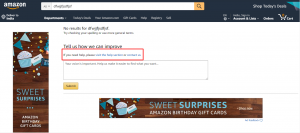There are plenty of people (about 12,000 a month) searching for “digital marketing definition” in Google. And the results served up focus on the channels (social, online ads, SEO, etc.) with barely a mention of customers—except to say that their behavior in response to your campaigns will help you make decisions about which campaigns are working and which ones should be scrapped.
But the focus on channels misses the whole point.
If you don’t really understand your customers and specifically what is driving them to buy your product or service, no amount of “tweaking” digital campaigns is going to make any difference. You will have been off-target from the start.
Your ads won’t be relevant; your site won’t answer their questions, and may even turn them off; and you’ll talk down to them, irritate them, or bore them, without realizing you are doing so. And, in our digital world, all of this will happen in the blink of an eye, and you will lose their business before you even knew you had a chance.
There is a solution, and it’s a simple one. You actually need to reach out to your current customers and interview them as I describe in my book (in chapter 3 – but make sure you read chapters 1 and 2 first). What you learn will get you in sync with your customers, so every channel and every message will work much better for you.
As a marketer or business owner, you must do this to avoid wasting money and time on campaigns that don’t work. And you will discover that your customers have VERY specific perceptions and desires that you weren’t even aware of before.
In the meantime, because I interview my clients’ customers all the time, I’m going to share some of the insights I’ve gained that have wider application.
These are some of the real customer trends affecting customer behavior in today’s digital age, from the very types of people you’re trying to sell to.
Is your campaign mentioning the wrong problems?
Everyone creates personas these days. But they can be totally off. Why? Because they focus on describing the person, rather than on the person’s buying process and the questions that must be answered.
In many cases, personas get in the way. How many times have you seen an ad or article aimed at you, and you get irritated because the writer spends too much time commiserating with you as if they want to prove how much they know about you? Marketers tend to show off a little when they think they finally understand you.
But you already know who you are, and what you care about. You don’t need someone to explain your problem to you. You need answers to your very specific questions. “How big is this thing? Can I see a close-up, so I can see how well it’s made? Do you offer free shipping? Does it work with [X]?”
As buyers, we are even frustrated by sellers who don’t bother to say “what this is.” The sellers are so familiar with the product or service that they fail to identify it when you show up on their site. As buyers, we know how often we are determined to buy something, and the sellers either omit critical information or literally get in our way.
When we are the sellers, we don’t think like buyers. We know more about our products and services than we know about the buyers. Generic customer descriptions don’t work, because they fail to address those very specific requirements that buyers have.
That’s why you can forget everything you know about channels until you have interviewed those who have already bought from you. They will be happy to help, because they have invested in your product or service and they want you to continue to succeed. And, they will be past the buying process (they won’t tell you what they’re thinking while they are buying), and will be able to tell you how well you answered their questions and the exact reasons why they bought your product.
What’s on your “About” page?
Every single executive I’ve interviewed over the years (thousands) looking for a B2B service (and products, too) wants to know who is behind the company. (I’ll cover B2C customers in a second.)
The first place B2B (business to business) buyers go, when they get to a site, is the About section. They want to see pictures and bios. A short video from the founder wouldn’t hurt either. All of this goes a long way to answer the most pressing question: “What’s going to happen to me after I buy?”
“Who are these people? What do they care about? Do they appear smart and confident, but also friendly and helpful? What is their experience? Do they care about their customers, or are they just in it to build it and flip it? What gets them up in the morning?”
If you don’t show pics and bios, and just have some generic “mission statement” blah blah, you will lose them. You will not have answered their most pressing questions. That’s what a buying process is: A series of questions that must be answered to the buyer’s satisfaction, or the buyer will not proceed.
A B2B buyer is going to make a decision that will affect others in the company; his or her reputation within the company; other systems and important outcomes. That’s why knowing who is running the company and what they care about (and whether they can be trusted to deliver) matters so much to the business buyer.
B2C (business to consumer) buyers care who runs the company, too. But for different reasons. Today’s digital customers, especially those under 50, want to know if the company is a responsible humanitarian or earth citizen. They are willing to spend a little more, or will be more likely to be a loyal customer, if they know that the company cares about the environment or works to serve a larger purpose.
So B2C buyers also want to know who is behind the company and what they care about. They are “over” big corporations; life online has gotten very personal.
Take a look at your About page. If it is just a bunch of text with no pictures of people and their bios/passions, you’re disappointing—and losing—buyers you could have attracted.
Are you “instatizing” your business?
For some of our clients, social ads are turning out to be an excellent source of leads. But they come with a price beyond the cost of the ads and the management of those ads: Your response must be immediate. Same for online chat.
You, or someone who works for you, must be able to engage as soon as the buyer starts to chat. You should set up alerts so you get that chat message on your phone wherever you are (or whenever it comes in). The person responding must know enough to answer the buyer’s questions to the buyer’s satisfaction.
Digital buying has gotten very immediate. You think, “I need a new saucepan, I just burned this one up.” And two minutes later, you’ve reordered that same saucepan from Amazon. Think it, buy it, get it the next day.
People expect immediacy; you need to look at all aspects of your business and figure out how to deliver it. Chat; templates; self-service forms on your site; offering customers choices they can make while buying; try-before-you-buy scenarios; and payment by credit card. These are just some of the examples of “instatizing” your business.
Are you showing up where they are looking?
When you’re being one of today’s digital buyers (as are we all), you know now that if you don’t find it in one place, you will find it in another. You just have to keep looking. You change your search term; you discover how other people are looking for it and try that. You adjust until you land on a page that serves it up.
You don’t have to settle, because you know if you look hard enough, you will find it.
What this means for us sellers is 1) we better have what they’re looking for and 2) we have to be very careful to use those words and phrases that our customers will end up typing in when they go looking.
This is Search Engine Optimization 101, of course, but it is surprising how easy it is to get off track. For example, our company offers all types of digital marketing, including social, SEO, SEM, content marketing, sites, and so on. So it would be tempting to run ads focusing on those words and phrases.
But when someone comes looking for what we really offer—a full-service digital agency—they have already tried at least one of those services, and they were disappointed. One channel alone doesn’t work anymore, as a general rule. Buyers are all over the place, and you have to use more than one channel to reach them. This is often referred to as OmniChannel Marketing, but I think of it as OmniChannel Buying.
So the company that has tried one channel is not going to be looking for that channel anymore; they’re going to be looking for someone who helps them determine the best channels for the highest return. This is a good example of the buyer’s state of mind when they’re buying, which is much more important than other characteristics.
It’s also essential to document the words and phrases your competitors are being found for, so you can show up for those same phrases. Your marketing dollars need to be where your customers are already finding and engaging with others.
To sum up some of these observations, today’s digital-age buyers are into speed, specificity, search, and substance. They are very unimpressed with passive, corporate marketing. They want sellers who understand them and can relate to them, even though they are doing most of the interacting via some kind of screen.
Digital & Social Articles on Business 2 Community
(34)






